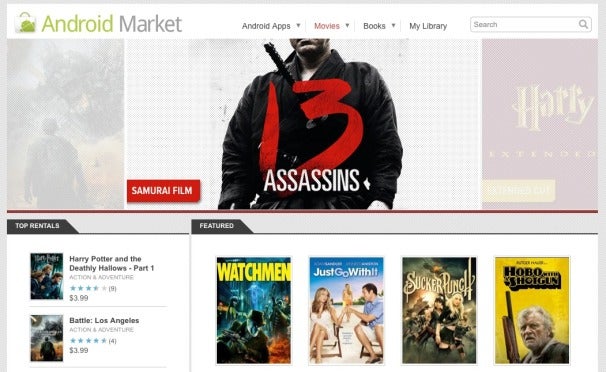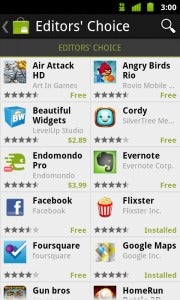 This story ran in the print edition of The Seattle Times on July 8, 2011. -Sharon Pian Chan
This story ran in the print edition of The Seattle Times on July 8, 2011. -Sharon Pian Chan
In the hunt for the next billion-dollar business, Microsoft may have discovered one in mobile software. It costs Microsoft nothing to produce and sell, and it's not Windows Phone.
It's Android, the wildly popular -- and free -- mobile-phone software made by competitor Google.
In the past nine months, Microsoft has gone after a handful of companies that make Android phones and tablets.
It has either sued or persuaded the companies to pay it license fees for some technologies found in certain Android features. Microsoft contends it has patents on those technologies.
Four companies in the past two weeks said they will pay licensing fees to Microsoft for selling tablets and phones that run on Android.
HTC, a major Taiwanese smartphone maker, entered into a licensing agreement in April to pay Microsoft a reported $5 per Android phone
Microsoft has begun talking to Samsung, the world's largest maker of Android phones, about a licensing agreement, Reuters reported Tuesday, citing South Korean media reports.
Microsoft, Google and Samsung declined to comment for this story.
But Brad Smith, Microsoft's chief attorney, addressed the issue in a wide-ranging discussion with reporters in June. Asked whether Android is a new business for Microsoft, Smith said, "We've been open that we're happy to enter into a licensing agreement" with companies that make Android devices.
Asked about a Citi analyst report that HTC was paying Microsoft $5 per Android phone, Smith said, "That seems like a fair price." He said $5 is less than how much Microsoft charges for each Windows Phone license.
"At Microsoft, we stand behind our products and customers," Smith said. "Google says it stands behind its products, but some days they stand so far behind, I'm not sure anyone can see them."
If Microsoft managed to get all Android phone and tablet makers to cough up $5 per device, Microsoft could make more than $913 million a year, using Google's figure of 500,000 new devices per day.
At Microsoft, any business that can bring in $1 billion annually is significant. In fiscal 2010, the Entertainment and Devices division, which includes the Xbox business and mobile software, made $8.1 billion in sales and $679 million in operating profit.
Google has said its mobile business, including search, advertising and services, is a $1 billion enterprise. The company gives away Android, but it sells deals to phone and tablet makers who want exclusive rights to offer the latest software for a limited period.
Android is the world's fastest-growing mobile operating system. Google said 100 million people are using Android devices and, by year's end, it's projected to have 40 percent of the worldwide smartphone market, according to Framingham, Mass. research firm IDC.
Nokia's Symbian software, which topped the market for a long spell, is expected to shrink to 21 percent; Apple will maintain a share of 16 percent and Research in Motion's BlackBerry will slip to 15 percent.
Microsoft's share, which includes both Windows Phone and its older Windows Mobile software, will grow slightly to 6 percent. Analysts think Microsoft has the potential for faster growth over the next few years because of a partnership with Nokia that makes Windows Phone the primary software for phones Nokia says it will start selling in the fourth quarter.
Tablet and phone makers flocked to Google because Android is a royalty-free alternative to Apple's iPhone and iPad software (Apple does not license its software to other companies, in any case). Android was more technologically advanced than Microsoft's previous phone software, Windows Mobile.
Microsoft has yet to develop an operating system designed specifically for tablets. It said it is building its next operating system, Windows 8, to run tablets and traditional PCs. That system is expected to be finished between October 2011 and 2012.
In October 2010, Microsoft launched the first volley at Android, suing Motorola Mobility in U.S. District Court of Western Washington and complaining to the International Trade Commission. Microsoft claims Motorola's Droid phones, which use the Android platform, infringe on nine of Microsoft's patents.
In November, Motorola countersued Microsoft in federal courts in California and Florida, saying Windows 7, Windows Vista, Windows Phone 7, Hotmail and Exchange Server software infringe on its patents.
Microsoft also sued Barnes & Noble in U.S. District Court in Western Washington over its Nook e-reader, claiming the book giant copied Microsoft's intellectual property as well. The Nook runs on Android.
Smaller companies Onkyo, Velocity Micro, General Dynamics Itronix and Wistron said in the past two weeks they will pay Microsoft license fees for devices they sell that run on Android.
Microsoft could potentially target many other companies with Android devices, including Dell, Sony, Sony Ericsson, Asus, Acer, LG and Toshiba.
One company is absent from Microsoft's cross hairs: Google.
Law professor Mark Lemley said large companies in the IT industry normally avoid suing each other directly.
"It's kind of like in the Cold War, this idea of mutually assured destruction," he said. "You have the power to take me out of the market and I have the power to take you out of the market, so why should either of us exercise that power?"
Lemley, the William H. Neukom professor at Stanford University, has represented Google's book-search business, but not its mobile-software business. He said it's not unusual for companies to sue each other's customers.
"What's interesting about smartphone litigation is that we're seeing that traditional détente in the IT industry breaks down," he said. "It's because companies are aggressively jockeying for market share, and nobody really knows how the market is going to shake out."
He said the lawsuits could stifle innovation; that happened during the early days of the aviation and radio industry.
Colleen Chien, a patent-law professor at Santa Clara University Law School in California, said Microsoft has become much more aggressive about intellectual property.
Microsoft and Google, along with other companies, recently bid against each other for a set of Nortel mobile-technology patents. Microsoft's consortium won.
"They're fighting over patents in the courtroom, and in the auction house, and for the customer in the marketplace," Chien said.











